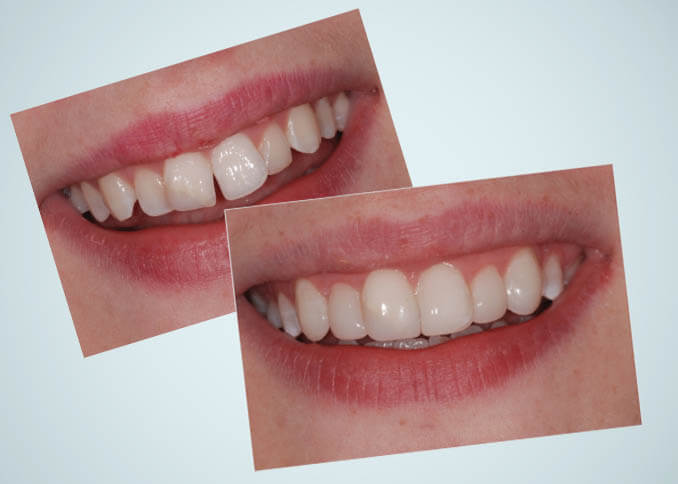Composite Bonding
Tooth bonding is the procedure where the application of a tooth-colored resin material used to correct chipped or broken teeth, the spacing in between the tooth and uneven tooth shapes. The procedure named tooth bonding is because the tooth colored materials are directly bonded to the tooth surface to recreate their shape.
Bonding is usually used for cosmetic purposes which help to improve the overall appearance of a discolored or chipped tooth. In addition to dental bonding, it can be used as a cosmetic alternative to amalgam fillings and protection of exposed tooth root when gums recede.
Teeth Bonding Uses
Dental bonding can be considered to fix the following dental issues:
- Decayed teeth
- Chipped or cracked teeth
- Improve the appearance of discolored teeth
- Close spaces between teeth
- Enhance the size and shape of teeth
- Alternative to amalgam fillings
Procedure Composite Bonding
Dental bonding requires a little to no tooth preparation without using anesthesia. The dentist will do dental bonding which matches the shade of your existing teeth.
Dental bonding can be done in two effective ways:
- 1. Direct Composite Bonding
- Direct composite bonding is a procedure where dentists will use tooth-colored composites to fill dental cavities, restoration of chipped or cracked tooth, remove spacing between the teeth by recreating the shape of the teeth and build the worn-down edges of teeth.
- 2. Adhesive Bonding
- This is the process of attaching custom made restoration to a tooth with the help of adhesives. This method is mainly used for esthetic crowns, veneers, dental bridges and inlays/onlays.
- After the procedure is done, the dentist will polish the material till it matches the shade of adjacent the teeth present in the mouth.
Pros and Cons of Dental Bonding
Pros
- Dental bonding is highly acceptable dental restorations for aesthetic purpose
- Less expensive in all cosmetic dental procedures.
- It can be done in single dental visits unless multiple teeth are involved. It needs a little or no removal of tooth enamel
- Do not require anesthesia..
Cons
- The bonding material is not as strong as your natural teeth as it can easily break when biting fingernails or chewing pencil.
- Dental bonding only lasts for few years and it needs to be repaired
- It is not as strong as other restorative options such as crowns, veneers, or fillings.
- Bonding is not as stain resistant as crowns.
Caring for Bonded Teeth
Your bonded teeth need same care like your natural teeth. It is very important to maintain a healthy and beautiful smile, for that you need to keep good oral hygiene habits. Brushing twice a day and flossing is the good way to maintain proper oral health. Routine dental check-ups are necessary for the evolution of your bonded teeth and corrections if required. The bonding material can break so try to avoid biting on hard objects.
